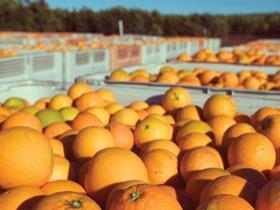
Leading Australian grower-marketer Costa Group is eyeing increased opportunities for its citrus offering in Japan, following the installation of a new brix sensor at its South Australian packing shed, according to the Australian Broadcasting Commission (ABC).
The infrared sensor is capable of grading 400 tonnes of navel oranges per day, with a brix scale used to measure the sugar levels of each individual piece of fruit.
Costa Group’s citrus category manager Richie Roberts said the technology could help boost sales in the Japanese market, where many retailers display the brix values of their fruit to assist shoppers in choosing their desired sweetness.
“From the Australian industry's perspective, Japan is the largest market it ships too,” Roberts told the ABC. “Japanese consumers are very educated about the brix level of fruit. With brix 'sensored' fruit consumers are more confident about what they're buying, they know they'll be satisfied with the product and they will come back and buy again.”
The installation is likely to prove valuable over the upcoming Australian season, with Japan looming as a likely market for the higher volume of composite grade navels tipped to come out of the key Riverland and Sunraysia growing regions. The influx is the result of some slight skin blemishing, caused by unseasonably late winds.
“Japan has been buoyant up until now and over the last couple of years has been willing to take some solid volumes of composite grade fruit,” BGP International’s Neil Barker told Asiafruit.
Roberts believed the data from the brix sensor would remind potential buyers that the internal quality of the fruit remained unaffected, allowing Costa to sell composite grade fruit at higher prices.



